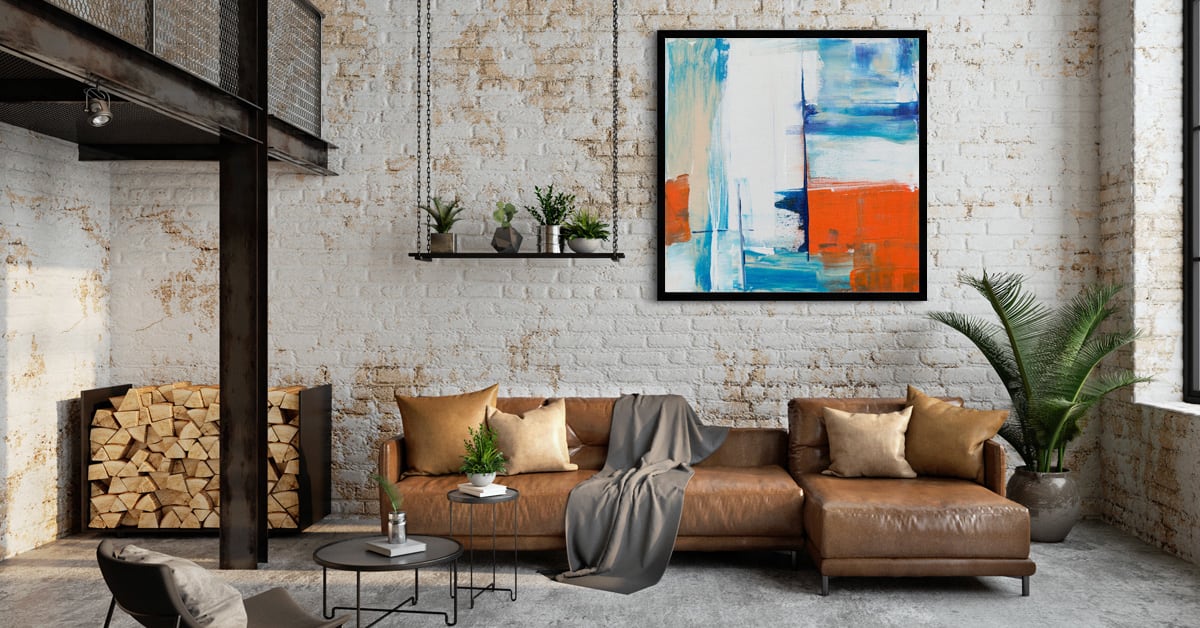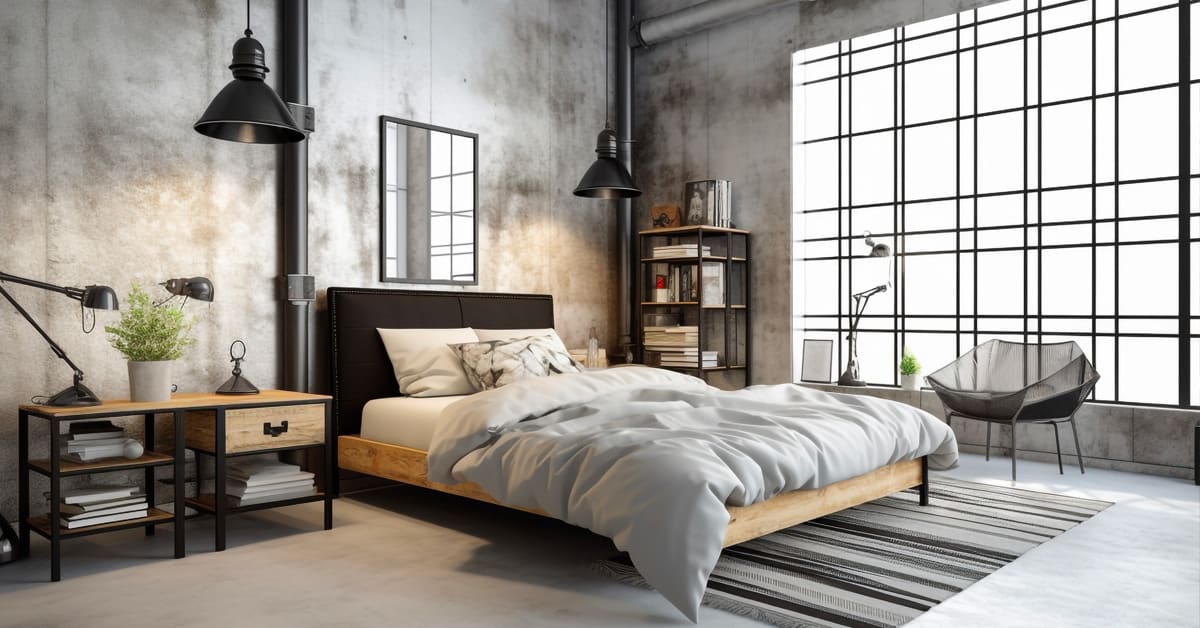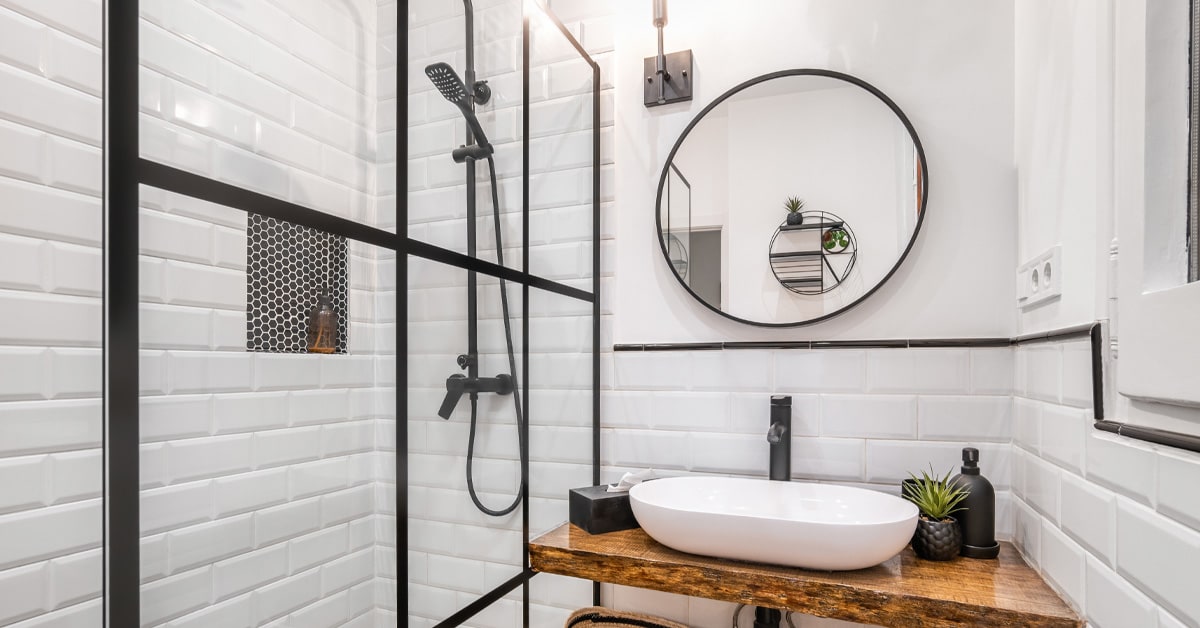Industrial Decor Style: A Complete Guide
Bringing Industry Home
A mix between rustic warehouse and modern minimalism, Industrial Decor style is a great example of breathing fresh life into elements that you’d normally see in buildings zoned for manufacturing. This design style embraces all the architectural elements — pipes, concrete, metals, brick — that might otherwise be covered by drywall or cabinetry in more traditional decor styles.
Where Did Industrial Decor Originate?
The Industrial Revolution, which began in the late 1700s, was the genesis of buildings that have inspired Industrial Decor. However, the popularity of this interior design style didn’t develop mass appeal among homeowners until the 1970s and 1980s. That’s when loft-style living became the go-to housing in big urban centers. The old, abandoned warehouses in these larger cities were converted into apartments, changing the way these otherwise unfinished spaces were used.
Who Does Industrial Decor Appeal To?
Of course, this decor style can work well in spaces that were constructed much more recently than the 18th century. It appeals most to anyone who appreciates raw materials, functionality, clean lines, and a sense of history. Along with residences, this design style has become popular in business environments such as retail spaces, coffee shops, and offices.
Elements of a Storied Past
Industrial design is a simple style at its core and can be jazzed up with the right elements. Because of its minimalist approach, Industrial Decor allows for some flexibility, and can play quite nicely with other interior design trends. Here are few components you may like to incorporate when decorating with Industrial Decor Style:
- Overall neutral color palette with emphasis on black, grays, browns, and whites
- Earthy pops of color like green, deep blue, and terracotta will complement the neutrals
- Clean lines and boxy silhouettes
- Metal fixtures, such as pendant lights and pipe shelves
- Exposed pipes, ducts, beams, columns, and brickwork
- Sleek furniture made of raw materials such as wood, metals, and leather
- Dark flooring: reclaimed wood or concrete
- Vintage pieces, in furniture or accessories
- High ceilings — raise the roof!
- Large windows to allow in adequate light
- Distressed wood picture frames on walls or side tables
- Minimalism in style and furniture — take less to the max
Industrial Decor Vibes, Room by Room
Consider these ideas for infusing the Industrial Decor aesthetic into various rooms of your home.

In Your Living Room
Envision sleek furniture and metal accent pieces. While the idea is minimalism here, don’t be afraid to adorn the walls with large-scale graphic prints or abstract art. Exposed lighting in a chandelier or runner lights in the ceiling would be perfect in the living room. A low-profile sofa in durable upholstery, like brown (or even white) leather, helps create a less-is-more look. Showcase any pre-existing fixtures that can become statement pieces, such as high ceilings, vents, brick walls, and fireplaces. Cement or dark hardwood floors stay true to the Industrial Decor style. For finishing touches — and to add in the comfy factor — layer plush rugs and toss a throw blanket across a leather chaise lounge.

In Your Kitchen
The kitchen is ultimately a place of functionality, making Industrial Decor a natural fit in this space. Think unfinished wood or concrete tops for counters or the island. Stainless steel or SMEG appliances invoke industrial energy, as do black faucets and light fixtures, while copper accents soften the ambience. Wooden cabinetry brings warmth, but you could also opt for exposed storage via open shelving; light travels more fluidly with open storage, making your kitchen feel larger. Brown leather counter chairs add softness, while metal stools have industrial written all over them. Capitalize on an exposed brick wall’s texture and let any exposed wood or metal beams draw the eye upward.

In Your Bedroom
Speaking of brick walls, you can absolutely paint them to subdue the space, especially a bedroom. It makes sense to want a few extra nods to coziness in your nocturnal oasis — an area rug, a fabric accent chair in the corner, sheer white curtains, plush bedding, lush green plants. Take advantage of high ceilings with a hanging chandelier. Since your bed is likely the largest object in the room, flaunt it as a focal point; for example, place it in the center of the room or hang it from ropes or heavy chains. Combine wood and metal to mix and match textures. Furniture on wheels not only adds to the industrial mood but makes rearranging furniture easy.

In Your Bathroom
Imagine standing at a rustic wood vanity with a metal-frame mirror, perhaps one that pivots to give it an extra boost of function. Caged lighting is also a cool industrial touch. Again, don’t feel you need to cover up exposed piping, especially in the shower or under the vanity. We’re picturing a glass shower framed in matte black metal, with black fixtures for the shower/tub and sink. What about a concrete bathtub? They make them! Leave exposed brick walls untouched for texture, or paint them white for a cleaner look — and easier cleanup. Bathrooms will always be a wonderful place for live plants so long as there is sunlight filtering in. Sliding doors (commonly found on loading docks) are a nice choice for a bathroom entry, especially if you need the space that a swing door would interrupt.
Storied Past, Stylish Present
What began as an unrefined, sparse look becomes a finished and lived-in home with the appropriate decor. Industrial Decor shouldn’t be cold, boring, or lifeless. The goal is to complement the architectural elements of exposed brick, metal, piping, and concrete in ways that fit the space and play well with the past they conjure. These existing elements can even be stand-alone centerpieces in a room, fully having their own moment. It’s a fascinating opportunity to create a space that honors our country’s industrial past by serving you beautifully and purposefully in the here and now.
Last Updated August 23, 2023